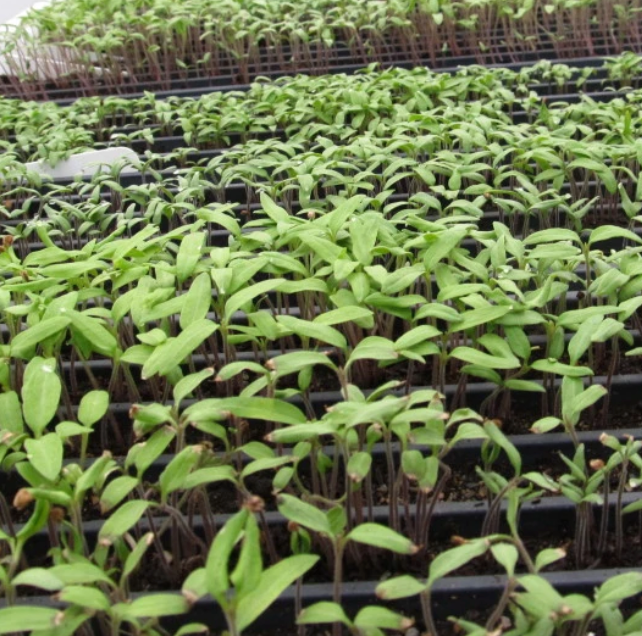
Top 5 Tomato Seed Starting Tips

1. Make it hot. Before beginning with any seed starting endeavor, it's always a good idea to get your seed starting area set up and together with all the specifics you need for that crop. Like other crops that need to be started in doors, you will need a good seed starting mix, appropriate containers, and labels. However, for good germination and a healthy start, tomatoes need plenty of warmth. Using heat mats, heaters, or other means, set up an area that can keep a consistent 80 degree temperature range for at least a week. This is where you will germinate your seeds. After gemination, the seedlings will need to be in a warm, full light place, that stays at 80 degrees during the day, and around 65-70 degrees at night for 3-4 weeks.
2. Start small. To start tomatoes from seed, begin by sowing in rows in rectangular containers. (See photo above.) I think of this type of seed starting as creating a mini-farm. Sow seeds furrows, spaced about 1/2-inch apart, and 1/4 inch deep. Once you've sown your line of seeds, cover with 1/4 inch of soil and tamp down. Space furrows about 3" apart in the container. When done this way, you can sow several varieties in one tray, just be sure to label them clearly. This technique has two advantages. The space needed to get the tomatoes started is a fraction of what it will be when they are mature, reducing the your heating costs for several weeks. The other advantage is you will "prick" the seedlings into bigger pots in about 3 weeks, allowing you to select the biggest, strongest ones. This saves soil, space, and time.
3. Regulate water. Tomato seedling are fragile when small and are very susceptible to damping off. To help avoid potential catastrophe, let the soil dry between waterings, and take care to water at the base, avoiding getting the stems and foliage wet.
5. Pot up. Once seedlings are 2-3 inches high and the first set of true leaves are just starting to emerge, prick the individual plants into bigger pots, preferably the ones they will live in until transplant time. I recommend container that are 3x3x3-inches per plant. Fill containers with a high quality, fertile seed starting mix. Using your index finger, make a hole about 2 inches deep. Insert 1 plant into the hole, making sure the roots and about 1/2 of the stem are buried. Press the soil firmly so the hole is sealed, and gently water in. Plants will take about 2-3 days to establish themselves. Care for potted up seedlings with the same care mentioned above.
For more tips on transplanting, check out our Top 10 Transplanting Tips.






